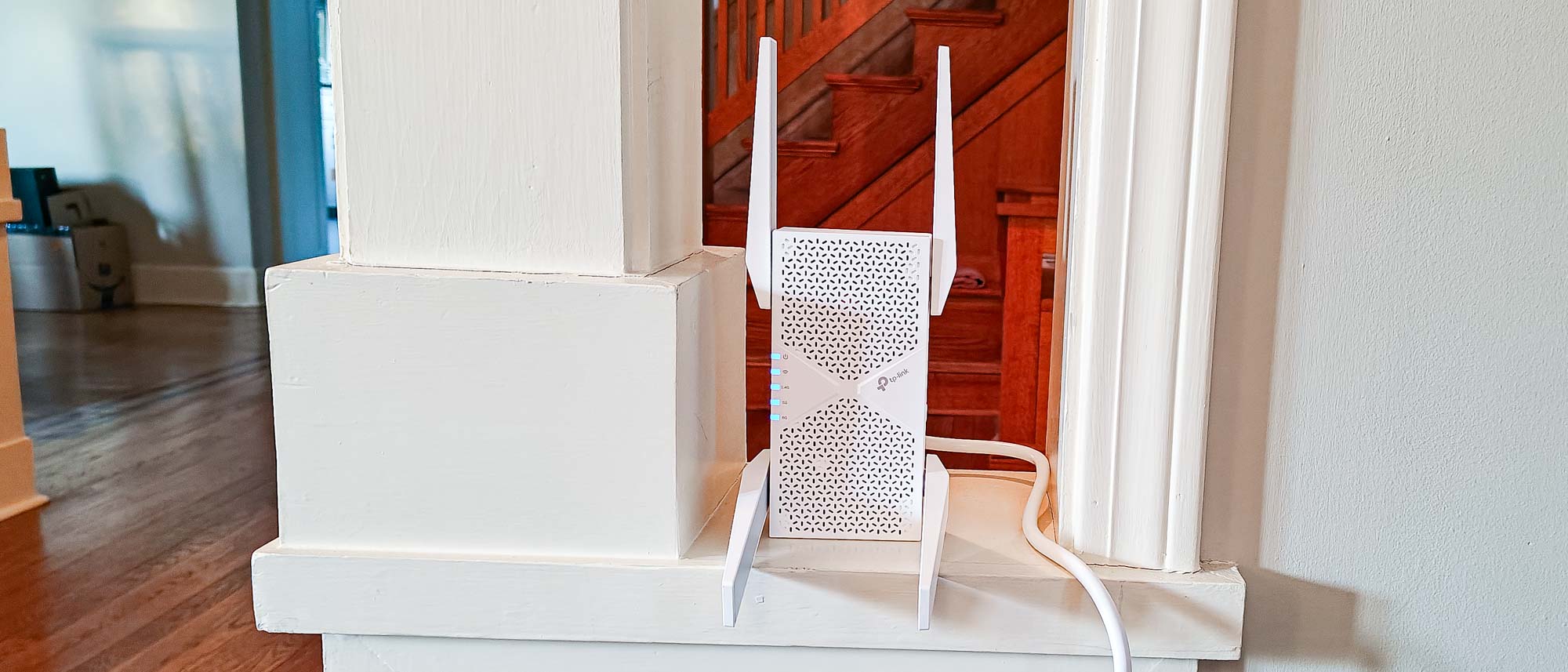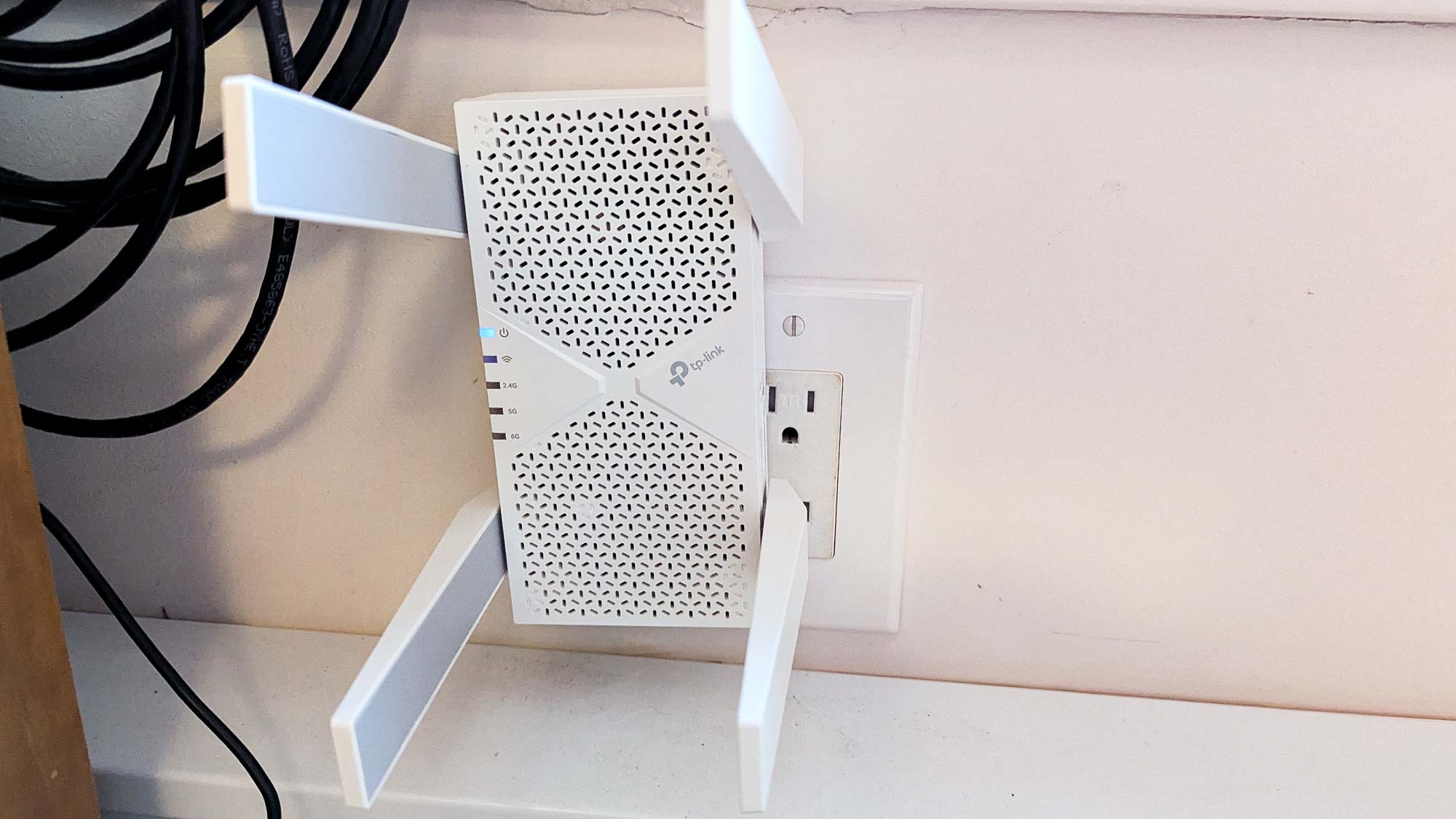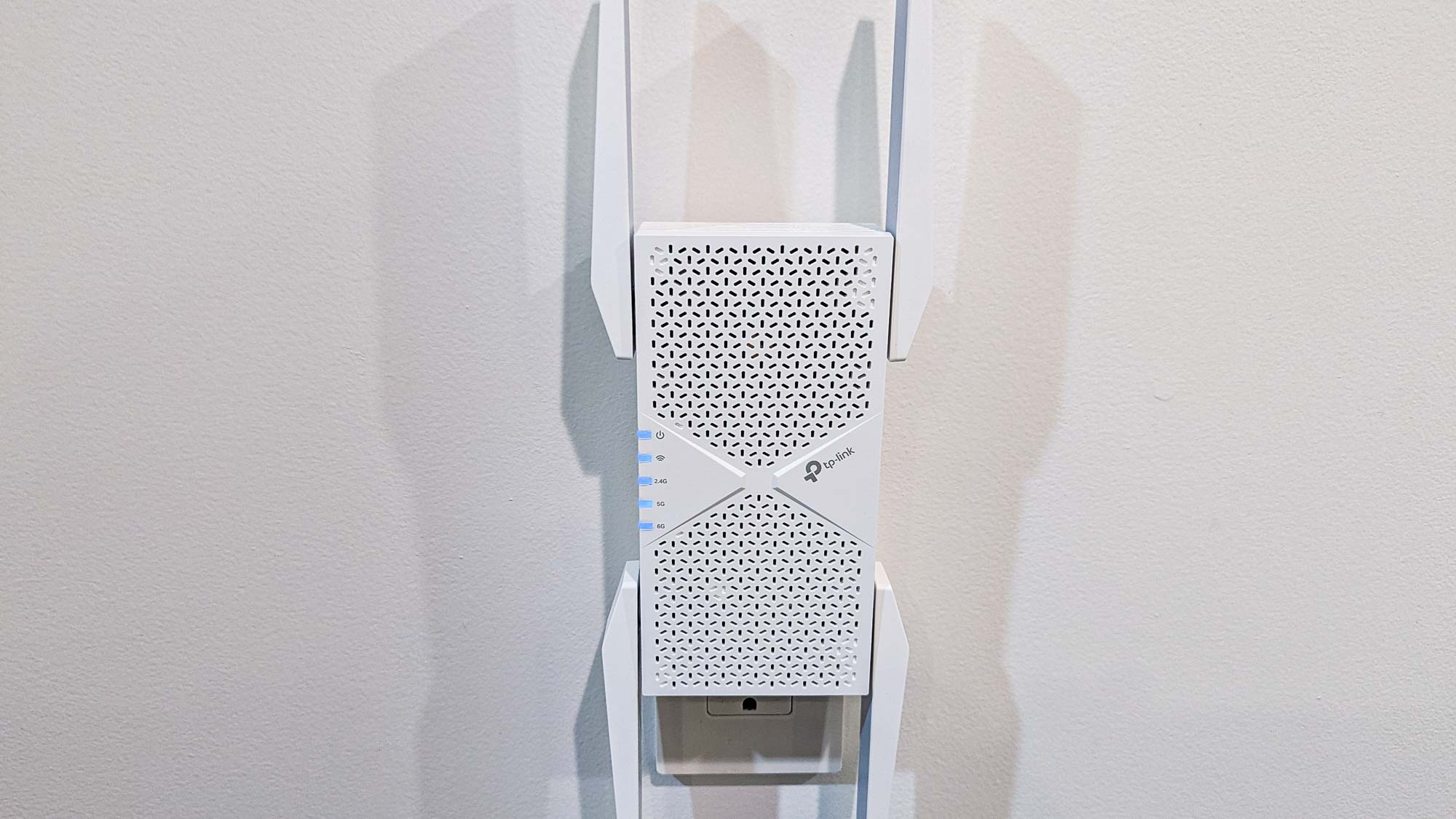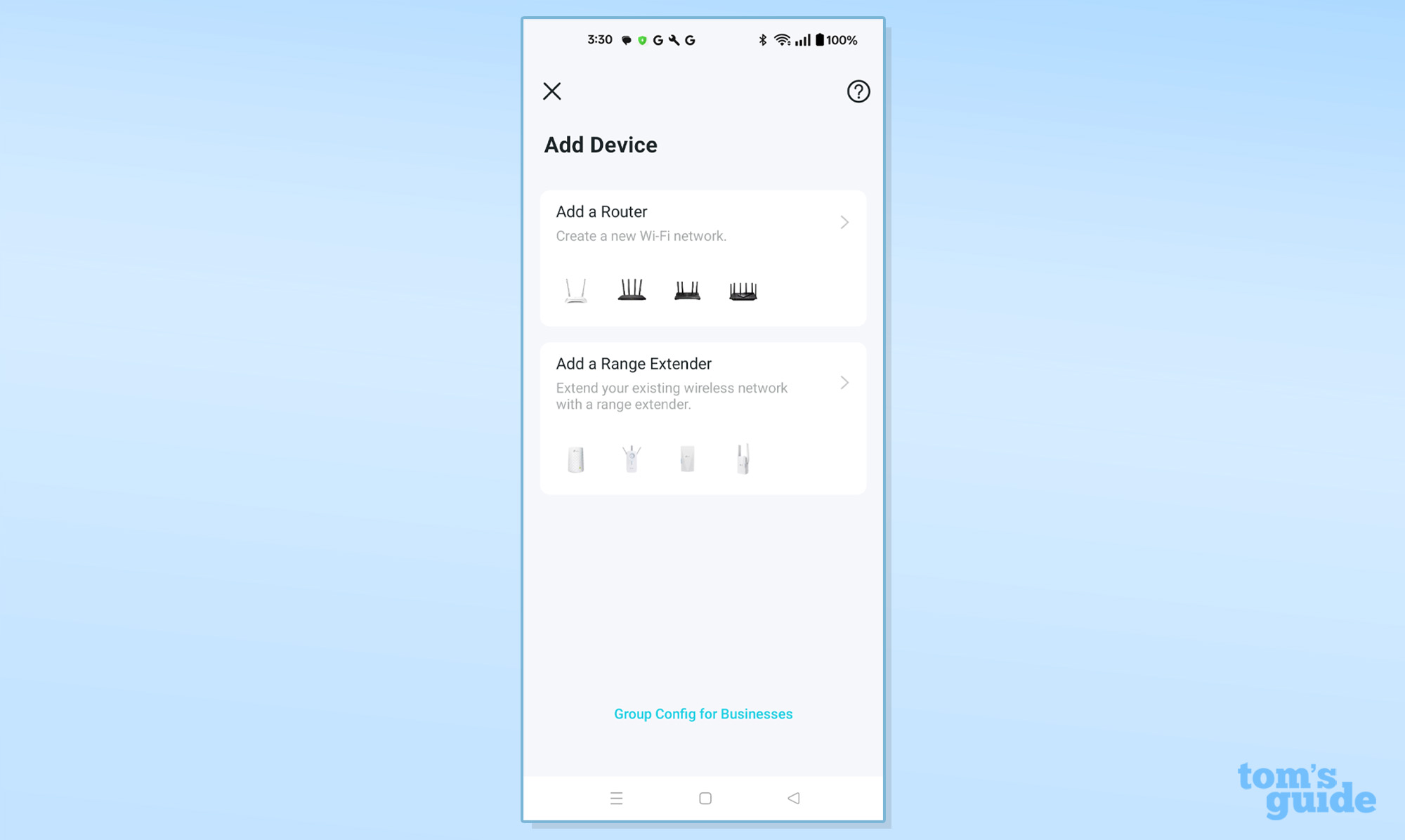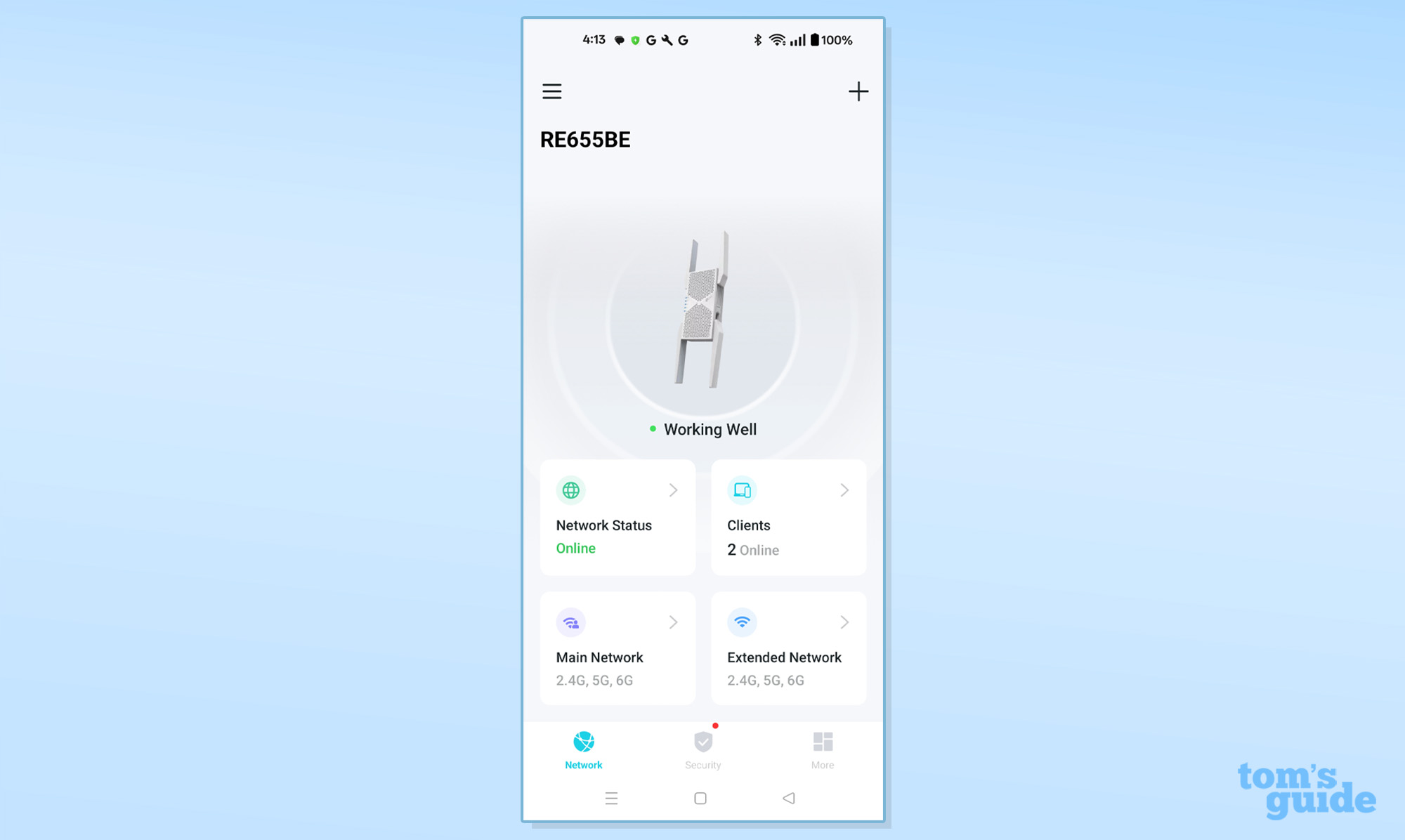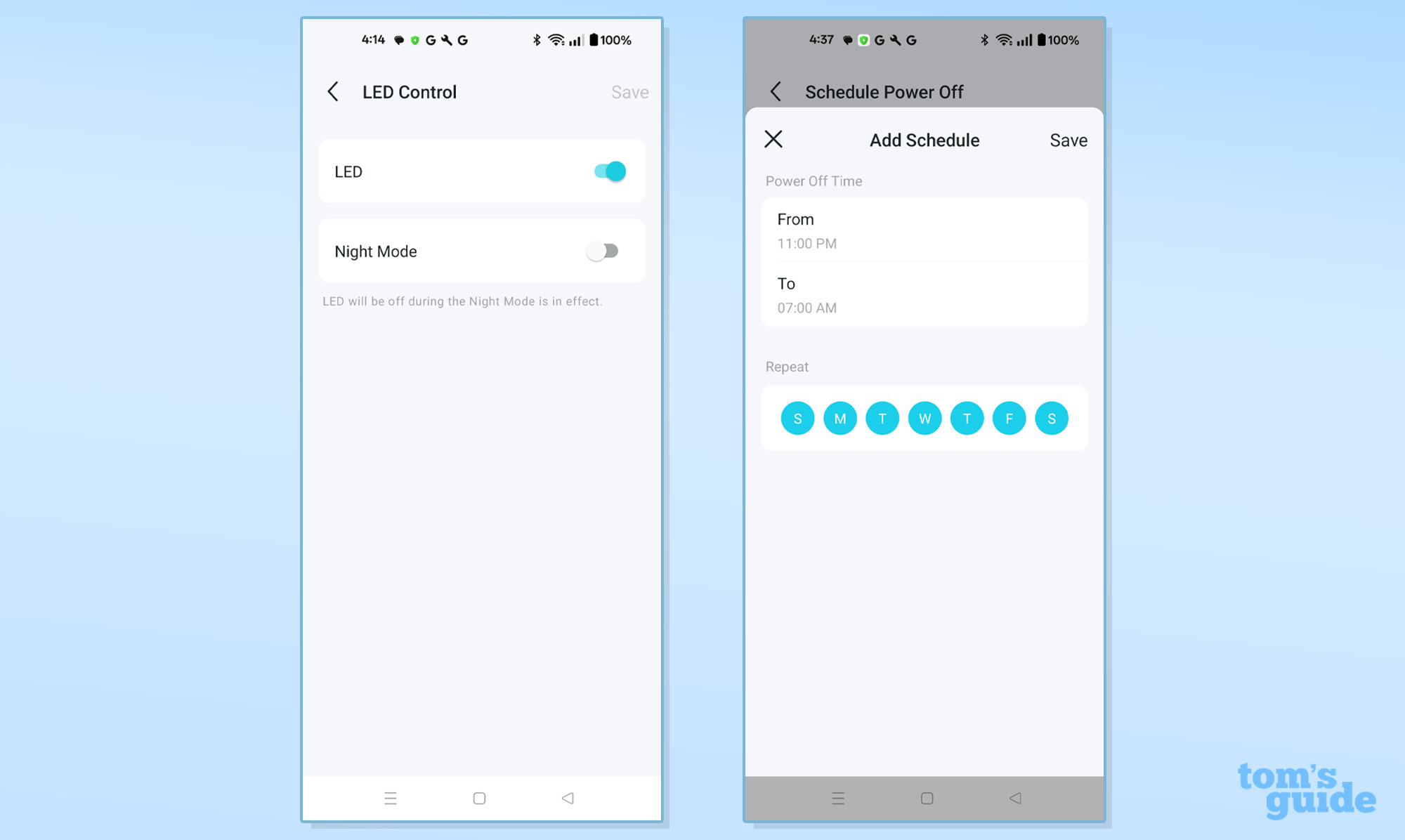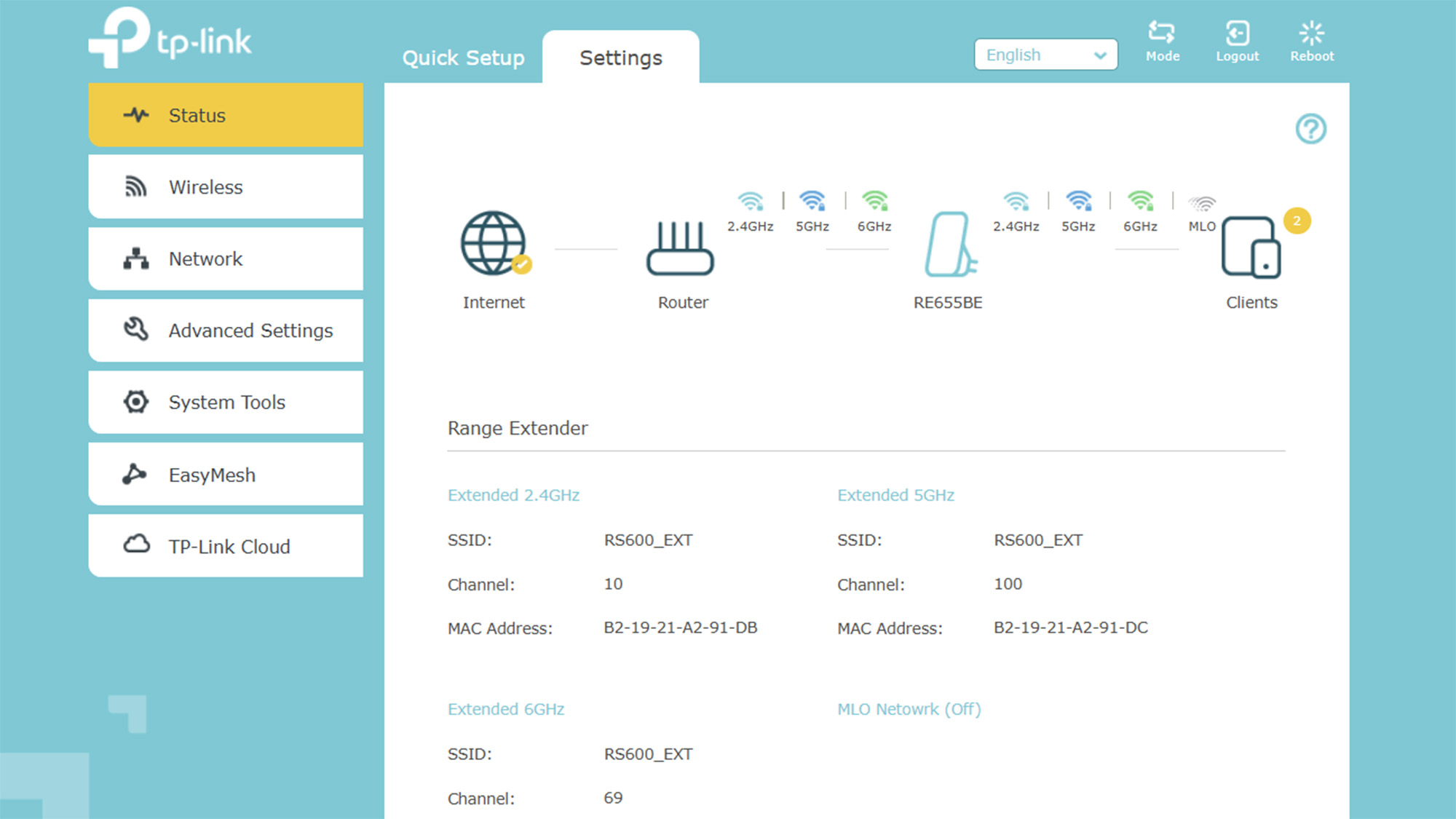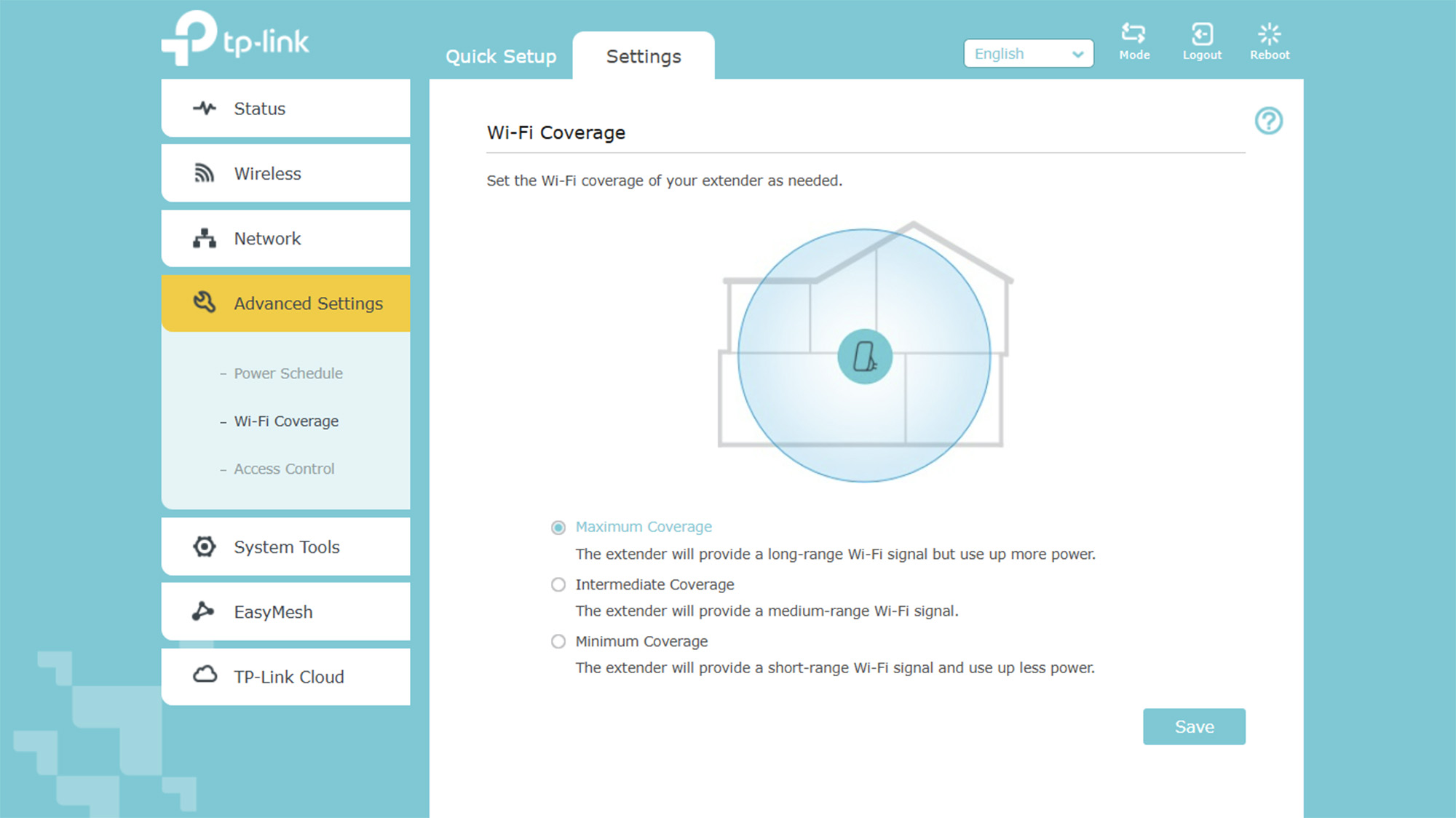Tom's Guide Verdict
With the ability to put data into Wi-Fi dead zones, TP-Link’s RE655BE is not only the first Wi-Fi 7 extender but it excels with top reliability and speed. Too bad it costs about what a good router does.
Pros
- +
Power scheduling
- +
2.5 Gbps Ethernet port
- +
Top performance with Wi-Fi 7
- +
Can work with an EasyMesh network
- +
Uses the 6 GHz Wi-Fi band with 320MHz data channels
Cons
- -
No USB port
- -
Very expensive
- -
Can block adjacent AC outlet
Why you can trust Tom's Guide
Wi-Fi Spec: BE11000
Number of Antennas/Removable: 4/No
Ports: 2.5 Gbps LAN
Peak 802.11ax performance: 719.5 Mbps (15-feet from extender)
Range: 90 feet
Size: 6.3 x 4.2 x 1.5 inches
Estimated Annual Electricity Cost: $11.10
By tapping into the 6 GHz data band, TP-Link takes wireless extenders into the Wi-Fi 7 era with its tri-band RE655BE. With everything from 320Mhz data transmissions to Multi-Link Operations, it has a slew of configuration options the others lack along with a 2.5 Gbps wired networking port. It can also join a TP-Link EasyMesh LAN.
Sure, it’s in the upper echelon of the best Wi-Fi extenders but it’s priced equivalent to two or three more pedestrian extenders and about what a good router goes for. See if it’s worth the scratch to fill your home with data.
TP-Link RE655BE review: Pricing and availability
About the most expensive extender available, the TP-Link RE655BE is available at Best Buy for $230 and an identical RE653BE model will be available at Amazon. It can add 2,800 square feet to a wireless network, according to TP-Link engineers.
TP-Link RE655BE review: Design
Slim but wide and long, the RE655BE appears to have it all. As a result, it is one of the largest extenders around at 6.3 x 4.2 x 1.5 inches with its four rotatable antennas stowed. When fully extended, the RE655BE becomes 13.4 inches long but if they’re arranged perpendicular to the device, it looks like a robotic dog.
Happily, its two prong plug is old house friendly and plugs right into any outlet but it might hog an adjacent outlet though. The RE655BE’s vents all around are only partially successful at cooling it.
Designed for the Wi-Fi 7 era of wireless networking, the extender has side buttons for starting the Wi-Fi Protected Setup (WPS) connection process and resetting the system. There isn’t an on/off key. Its five LEDs show power, its connection and status of the 2.4-, 5.0- and 6.0 GHz Wi-Fi bands; all light up blue unless something bad happens, then they glow red. However, they can be turned off in TP-Link’s Tether app.
TP-Link RE655BE review: Performance
Able to deliver extra Wi-Fi throughput, the TP-Link RE655BE is the first Wi-Fi 7 extender and the top performer available. With the extender 40-feet from the Netgear Nighthawk RS600 router and the IxChariot networking benchmark configured to mimic 10 home users, the Sharp Swift Edge 16 test notebook recorded data flow of 663.5 Mbps up close. This is easily the fastest extender around compared to the 201.7 Mbps to 449.6 Mbps range for the Wi-Fi 6 entrants.
Get instant access to breaking news, the hottest reviews, great deals and helpful tips.
With a more reasonable 10 feet separating the router and extender, the throughput jumped to 719.5 Mbps. That’s about roughly a third more data than the Asus RP-AX58’s 490.2 Mbps and triple that of the Linksys RE7350.
| Row 0 - Cell 0 | Asus RP-AX58 | Linksys RE7350 | Netgear EAX17 | TP-Link RE655BE |
10 feet | 490.2 Mbps | 203.7 Mbps | 383.1 Mbps | 719.5 Mbps |
40 feet | 201.1 Mbps | 80.6 Mbps | 197.9 Mbps | 376.7 Mbps |
At 40 feet, the RE655BE continued to lead at 376.7 Mbps, nearly double what the RP-AX58 (201.1 Mbps) and EAX17 (197.7 Mbps) delivered. It was 4 times as fast as the RE7350’s 80.6 Mbps.
The RE655BE had a 105 foot range but ran on the warm side at 114 degrees Fahrenheit. That’s 20 degrees warmer than the other extenders I tested.
While streaming data, it consumed 7.9 watts of power. If it runs 24/7 that equals an annual power bill of $11.10 if you pay the national average of 16 cents per kilowatt hour of electricity. It worked well with everything from 4K videos and online gaming to playing music and swapping emails.
TP-Link RE655BE review: Features
Able to cover all three Wi-Fi 7 bands, the RE655BE is a unique extender with the power to push high-speed data to a home’s extremes using 320MHz data channels, Multi-Link Operations (MLO) and 4K Quadrature Amplitude Modulation (QAM). Able to move up to 5.7 Gbps over the 6 GHz band as well as 4.3 Gbps and 688 Mbps using the 5.0 and 2.4 GHz bands, its 10.8 Gbps theoretical peak throughput blows other extenders away.
The RE655BE uses the company’s Smart Roaming technology to scan the area and select the most efficient way for the data to travel back and forth. The RE655BE can be a node in a TP-Link EasyMesh network, a traditional repeater or a wired access point.
Finally, the RE655BE’s 2.5 Gbps networking port worked with a computer, but would be just as good for a printer, a wired storage device or any other wired device for that matter. It outdoes the 1 Gbps LAN ports on other extenders but lacks a USB port.
TP-Link RE705X review: Setup and software
Getting the RE655BE online can be accomplished using the Wi-Fi Protected Setup (WPS), a connected browser or the TP-Link Tether app; there’re versions for iOS and Android.
After installing the app on my Samsung Galaxy S24 phone, I plugged the RE655BE into an outlet next to the router as outlined in the Installation Guide. I accepted TP-Link’s license but declined their kind offer to share my connection data.
I created a TP-Link ID, responded to a verification email and set the phone’s network connection to the RE655BE’s “TP-Link_Extend”. After I added an administrator password, I chose the type of equipment I was installing.
It found the extender and I chose the network to extend, with a configuration summary showing up. Everything looked good, so I moved the RE655BE to its final location 40 feet from the router and the notebook connected on the first try. It all took a longish 10 minutes and 45 seconds.
The Tether app’s Network page shows it’s online, connected clients and the status of the main and extended networks. It’s easy to add another extender with the “+” symbol.
The tabs below include Security, with a vulnerability scan that has a password strength appraisal and whether two factor authentication is activated. There are items for real time protection and access to TP-Link’s VPN but both require a $110 a year On the Go Antivirus protection plan; the first year is $40.
Its More tab is intriguing with a place to redo the setup, connect to a TP-Link EasyMesh network or block devices. After I turned off the LEDs, I scheduled on/off times for the extender, a feature none of the others provide.
Switching to the connected browser interface reveals an excellent Status page with everything at a glance, including network topology, connection condition and how many clients are online. The network’s name is shown but no passcode is identified.
There’s even a way to tailor the signal strength to keep your networking from spilling over into the neighbors. There are three choices.
TP-Link RE655BE review: Warranty and support
The RE655BE extender includes a two year warranty and unlimited lifetime support. That’s much better than Netgear’s 1-year warranty and a meagre 90 days of support unless you pay extra for it.
Should you need any help, TP-Link’s support site is chock full of videos, downloads and helpful advice. The FAQs are very deep and require some digging to get past the generic items. Still, it’s one of the best.
TP-Link RE655BE review: Verdict
The first Wi-Fi 7 extender, the TP-Link RE655BE certainly won’t be the last. Able to push a Wi-Fi network to the extremes, the triband extender has everything from 6 GHz transmissions and 320MHz data channels to a 2.5 Gbps wired Ethernet port and the ability to work with a TP-Link EasyMesh network.
Other things being equal, it’s among the most expensive range extenders on the planet, but other things aren’t equal with the top throughput for an extender of any kind. In other words, it’s the current top dog extender and able to enliven Wi-Fi dead zones with data.
Brian Nadel is a freelance writer and editor who specializes in technology reporting and reviewing. He works out of the suburban New York City area and has covered topics from nuclear power plants and Wi-Fi routers to cars and tablets. The former editor-in-chief of Mobile Computing and Communications, Nadel is the recipient of the TransPacific Writing Award.
You must confirm your public display name before commenting
Please logout and then login again, you will then be prompted to enter your display name.
